Decide! There is nothing in the world so pitiable as an undecided man, who wavers between two feelings, hoping to reconcile them, and does not understand that nothing can unite them.
~ Goethe
slip:4a1462.
Decide! There is nothing in the world so pitiable as an undecided man, who wavers between two feelings, hoping to reconcile them, and does not understand that nothing can unite them.
~ Goethe
slip:4a1462.
There’s an old saying familiar to those who work in radio: Radio has the best pictures. It’s obviously a jab at television. But it’s also completely true. Since it doesn’t literally have pictures, listeners are left to imagine, and imagination is almost always better than anything that can be jammed into images. This all goes doubly so for books and reading. I was grudgingly going along with Apple’s production of Asimov’s Foundation series of books. Until they showed me the Mule. (You either know this character, or I’ve lost you.) My heart sunk.
If you explore MicroMUSE today, you’ll get a preview of the fate that awaits all of our social systems. The streets are empty, but it’s more than that: there is a palpable sense of entropy. You can query the system for a list of commands, but many of them no longer work. It’s half glitchy video game, half haunted house. Sometimes it falls offline entirely, only to return days later.
The system still speaks. You are welcomed by the transporter attendant, who gives directions to all newcomers to this space city. It cautions you: Clear communication is very important in a text-based environment…
~ Robin Sloan from, Before Minecraft or Snapchat, there was MicroMUSE | Aeon Essays
slip:4uaeea24.
This article was nearly too much for me to read. That’s the Internet that was growing when I started tinkering. Today, with god-like power (from my 1994 perspective) at my fingertips, it took me 3 seconds to install a telnet client. And just a minute more to learn the answer to Sloan’s main question, “As kids, we make secret worlds – in trees, in our imaginations, even online – but can we go back to them when we’re grown?”
ɕ
Courage doesn’t always roar. Sometimes courage is the quiet voice at the end of the day saying, “I will try again tomorrow.”
~ Mary Anne Radmacher
slip:4a1246.
What we seek out is someone who sees us and consistently keeps their promises to bring us the magic we were hoping for. Someone who has committed to rhyming with what they did yesterday. When you trust yourself enough to turn pro, You’re entering into a covenant with those you seek to serve. You promise to design with intention, and they agree to engage with the work you promised to bring them.
~ Seth Godin
slip:4a984.
Motility, and in particular directed motility, is decisively important for host colonization, as bacteria deliberately seek to colonize an organism and conquer all niches.
~ Ludwig Maximilian from, How stress hormones guide bacteria in their host
slip:4upyne13.
*shudders* The article is about stress hormones in people, and research into how bacteria are (not “may be”) using our hormones to signal when they (the bacteria, *shudder* again) should go on the offensive and move. I don’t have anything to add. This just struck me as creepy.
ɕ
The difference between successful people and very successful people is that very successful people say no to almost everything.
~ Warren Buffett
slip:4a377.
I think many people assume, wrongly, that a company exists simply to make money. While this is an important result of a company’s existence, we have to go deeper and find the real reasons for our being. As we investigate this, we inevitably come to the conclusion that a group of people get together and exist as an institution that we call a company so they are able to accomplish something collectively which they could not accomplish separately. They are able to do something worthwhile— they make a contribution to society (a phrase which sounds trite but is fundamental).
~ David Packard Jr. from, The HP Way: Dave Packard on How to Operate a Company
slip:4ufote6.
“Important result,” as in: One way to measure value created is to use accounting, and money is a wonderfully well-understood thing with which to keep account. There are other ways to measure value creation, obviously. But even a not-for-profit company has to keep account of it’s balance; if its income doesn’t balance expense, eventually the creditors will cease extending their services. Everything—people, companies, communities—is somewhere on the spectrum from consumption thru creation, via accounting of value. The magic sauce is our minds. We each use our minds to create value, and we each find a vehicle for taking our ideas to fruition.
Anyway, that’s how I see it.
ɕ
The power of saying no is not a new concept. In addition to Ric Elias, Jason Fried and Ryan Holiday have also spoken eloquently about it on the podcast. Most of us struggle with saying no. Saying no is simple, but it’s not easy.
~ Peter Attia from, The power of no – Peter Attia
slip:4upete3.
Over-Accepters Anonymous should be a thing. I would totally attend those meetings. …wait, did I just say yes to a hypothetical commitment? …omg I really do need OAA meetings!
The first phase of getting myself under control was to learn to say the easier no’s. Those were the things that I didn’t actually want to do or accept, but which I used to say yes to out of habit or from a sense of obligation. I’m not perfect with that yet, but I’m getting close. (Go ahead, ask me to commit to something.)
But the second phase is far harder. (Who said, “the first 90% of a project is far easier than the second 90%?“) It’s difficult to say no to things I would in fact like to do! Curiously, years ago I made flossing twice a day into a habit—I know, right? Flossing is supposed to be really hard to make a habit, but some how I pulled it off. Meanwhile, I still say yes to far too many things that I want to do.
Yes! …another blog post written.
ɕ
How can addressing personal fears and vulnerabilities through movement practices lead to deeper personal growth and stronger community connections?
Gogoly Yao explains his background and the journey that led him to where he is now. He discusses how he first encountered parkour, and his work on Esprit Concrete with Kasturi Torchia. Yao shares his current challenges and what he is working on, and discusses his training with Esprit Concrete team member Georgia Munroe.
My focus in training has never been really about the movement. It has been about my fears. Like I said, that’s where it started, but I didn’t know at the time. I didn’t know a lot of things. I didn’t know where it was, what I was looking for, and what I could get.
~ Gogoly Yao (11:50)
Yao’s journey in parkour and movement began as a way to confront personal fears, including heights and physical vulnerability. His initial focus on power and large movements shifted after injuries forced him to explore conditioning and smaller, more controlled actions. This gradual change led to deeper self-awareness and a new approach to training, rooted in addressing psychological barriers.
Esprit Concrete, co-founded by Yao, reflects this philosophy by blending physical practice with emotional growth. The project focuses on guiding individuals to recognize their vulnerabilities and develop a personalized path forward, emphasizing personal agency and choice. The conversation highlights the balance between teaching others and continuing personal growth, with Yao candidly sharing his ongoing struggles with trust and control.
Takeaways
Trust and vulnerability — Trusting others is difficult but necessary for growth.
Training through fear — Addressing personal fears through movement leads to deeper progress.
Freedom in movement — Movement practices offer a sense of liberation and personal exploration.
Emotional strength — True strength lies beyond physical ability, involving emotional and mental resilience.
Individual perception — Understanding personal perceptions helps in addressing personal limitations.
Resources
Esprit Concrete — The project co-founded by Yao that blends movement practice with emotional growth and self-discovery.
Yamakasi Documentary — A film showcasing the origins of parkour that inspired Yao’s interest in the practice.
Kasturi Torchia @dr.ktorchia — Yao’s collaborator at Esprit Concrete, contributing psychological insight to the project.
(Written with help from Chat-GPT.)
ɕ
It’s all about the context. I find that having certain spaces where I do certain things works wonders. For example, if I want to do certain kinds of work, I sit here and all my tools are arrayed. In general, the act of showing up at the designated area and having the environment pre-set to be conducive to the activity is often enough to get my brain to shift into the mode I need.
Have you ever tried to find a chair for reading?
For about a decade I’ve had a typical Pöang chair from Ikea that I sit in to read. It’s absolutely horrible for reading. But it’s better than any chair I have in my house. So buy a chair Craig! …if only I could find one.
High enough at the back so I can rest my head. The whole chair tipped back far enough that I can completely relax and have all of my body settle into the chair. Feet flat on the floor. Padded arm rests. Arm rests high enough that when I hold the thing I’m reading it’s up at eye level.
Sorry. This quest is driving me bonkers.
ɕ
( In late 2016 I began a small discussion with a few friends about an idea. Eventually the project became a web site [now gone] and this series contains the posts from that site. The project continues in the Parkour Forum. )
Originally published Feb 14, 2017
I feel the Manifesto should contain a preamble. This would be an opportunity to set the tone of the thing, to lay some groundwork and to set out the Manifesto’s goals.
…meanwhile, we’re still trying to figure out how a “group discussion” works with web/email via the Google Group.
One thing I do not want to do, is to put ill-formed chunks of thinking here (on the blog on the web site). So this [this post itself] makes sense in the blog, but my draft-chicken-scratch musings do not. So here is this blog post, and I will next post into the group my musings.
– Craig Constantine
The goal of this Manifesto is to lay out values and ideals in the context of Parkour. I am writing in the hope that this will cause others to think deeply about their own values, ideals, and personal philosophies. If you do not consciously choose these things, you are surrendering yourself to the power of ideas you do not know you have accepted.
Do you have a mind? Do you use it? How do you use it? What does your mind realize? What are your values and ideals? Where did you obtain them? Are they correct? How does any of that apply to your personal understanding of Parkour?
These are deep questions, all in the realm of Philosophy. But this Manifesto is not meant to be a rigorous treatise of Philosophy. By thinking about these questions, each of us can expand our personal Parkour, and increase the good that Parkour can accomplish generally. I also believe that by examining questions commonly encountered in the context of Parkour, we can each enlighten our broader, personal philosophies, values and ideals.
Is there value in movement? Do I have the right to move? When might that right be limited? What responsibilities do I have for my actions? Am I responsible for the ideas and conceptions formed by others who perceive my actions? What responsibilities do I have to my community of fellow tracers, or to my community at large?
ɕ

eclipse was awesome, traffic, not so much. Didnt make our flite and decided to just steal our rental and drive 10 hrs to Pennsylvania… so far we’ve been stopped for speeding, stopped at a truck stop, eaten a bag of pork-rinds, stuck in traffic again, and are discussing where to have breakfast. In seven hours. This is like being in college again…
ɕ

Exceedingly rare…
ɕ
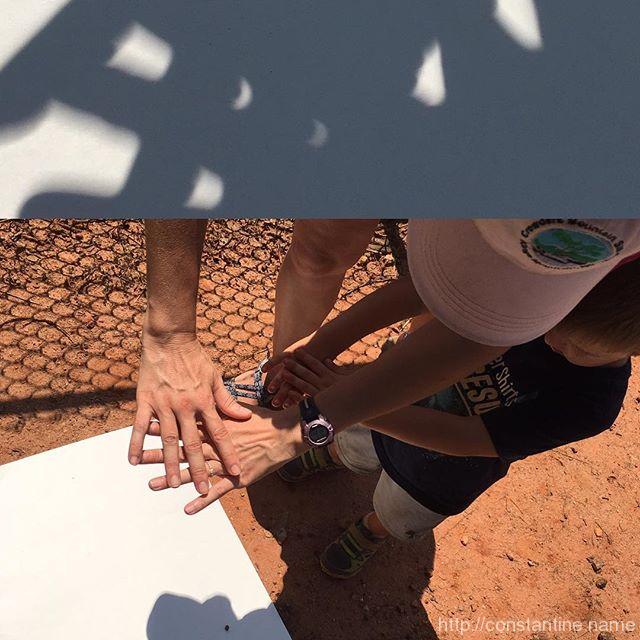
We’re here with a gang of friends, playing with all sprts of fun ways to enjoy the eclipse. #2017eclipse
ɕ

We’re just takin hack photos before total… but i’ve never seen a perfectly symmetrical approach… (ipad, thru solar filter)
ɕ

Experiments with welding glass filters #2017eclipse
ɕ

soon…
ɕ
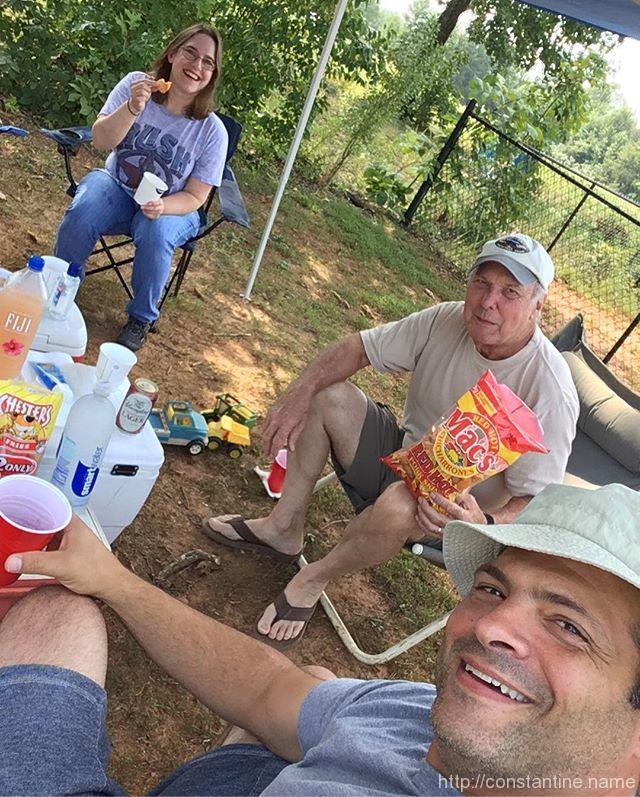
T-minus 90 minutes or so…. smack under the center line. no clouds no clouds no clouds….
ɕ
To develop this trait favorably one should stick to a job until it is done. Form the habit of staying, not quitting. And when you do feel like quitting think of Joe who trained for the distances, or Daguerre who spent fourteen years to get a photographic image to stick on glass. Don’t be a putter-off.
~ Brett McKay from, 5 Willpower Habits Every Man Should Develop | The Art of Manliness
slip:4uaowi7.
ɕ

Nope. Just more running. Here’s the sun rising on its way to a rendezvous with the moon. #100days #artdudeplacement https://constantine.name/100days #2017eclipse
ɕ

Amazing what you can find if you stop and look. Flashlight catches out dozens of snails partying on the rocks next to the bridge.
ɕ

More shots from the bridge!
ɕ

The Clifton suspension bridge across the Avon (yes, that Avon) River in Bristol England. The lights at the bottom of the photo are traffic on a highway. Cast iron bridge, +100 years old. Really REALLY high. WOW.
ɕ

Lastly from Blenhein, panoramas of the (upper of two) water terrace and the palace from about the *middle* of the lawn. D8
ɕ

The private “Italian Garden”
ɕ
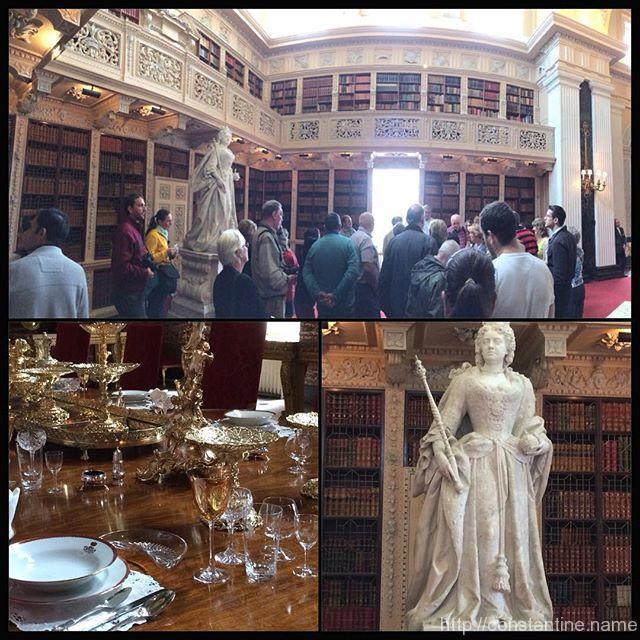
A glimpse of the Blenheim Palace State Rooms.
ɕ
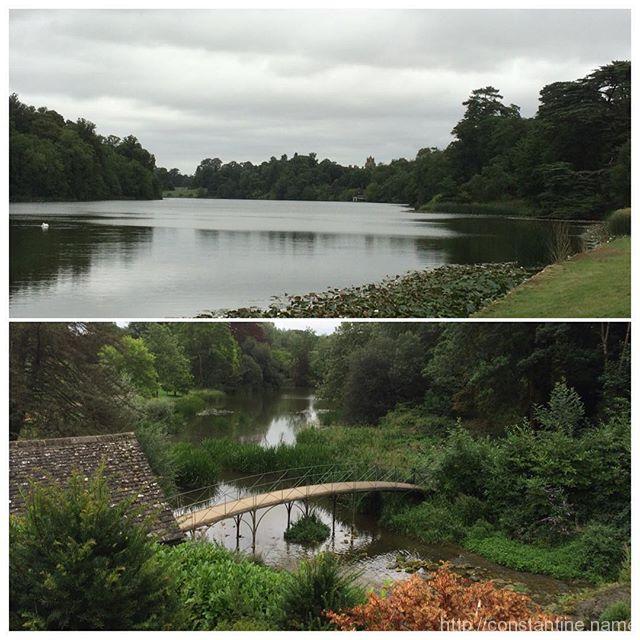
From the lake walk at Blenheim Palace
ɕ

Visiting Blenheim Palace on our last day in the English countryside.
ɕ
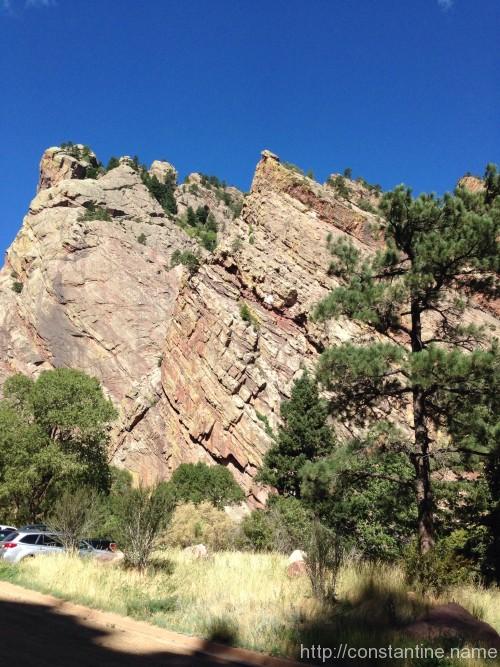
Tuesday night Mike got nominated for the ALS ice water challenge. So we decided to try it with, well, extra challenge:
Nobody can give you freedom. Nobody can give you equality or justice or anything. If you’re a man, you take it.
~ Malcolm X
slip:4a192.
I tire of responding to those. Let me offer one response that applies to all of them: I don’t trust my government, I don’t trust the people who work for my government, and I believe that the evidence suggests that it’s irrational to offer such trust.
~ Ken White from, «http://www.popehat.com/2013/08/20/faced-with-the-security-state-groklaw-opts-out/»
ɕ
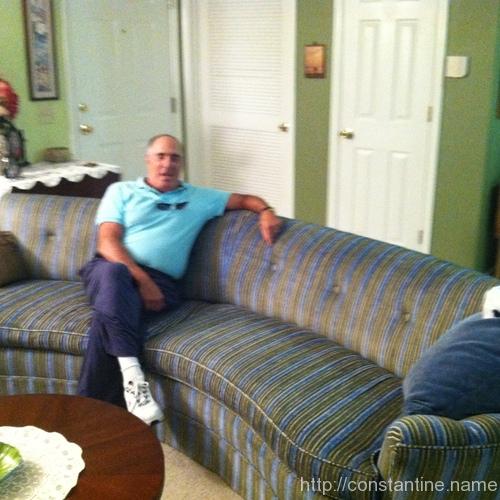
1953, custom made sofa… has been through four families in our larger family tree… if it could talk.
ɕ